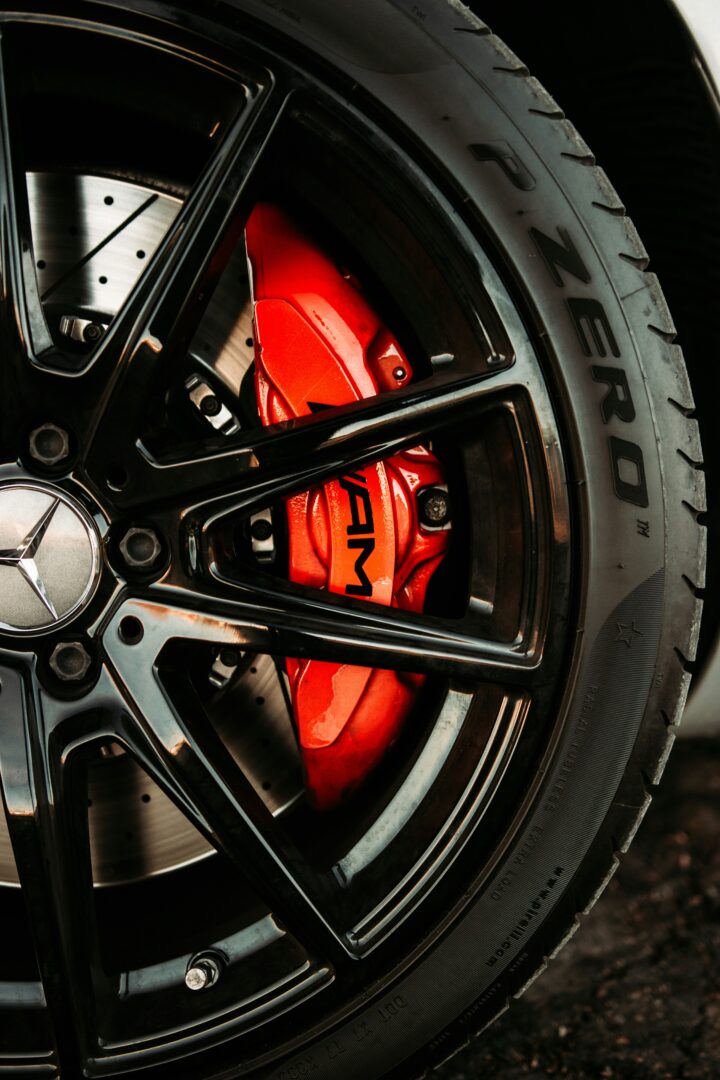Contents
- 1 Understanding the Science Behind Run-Flat Tires
- 2 How Run-Flat Tires Work
- 3 Reaction to Punctures: How Run-Flat Tires React to Punctures
- 4 Lifespan and Durability: How Durable Are Run-Flat Tires?
- 5 Advantages of Run-Flat Tires
- 6 Disadvantages of Run-Flat Tires
- 7 Run-Flat Tire Technology Advancements and Considerations
- 8 How Run-Flat Tires Work in a Nutshell
Run-flat tires have revolutionized the automotive industry by offering a unique solution to punctures and tire failures. Unlike conventional tires, run-flat tires are designed to enable continued driving even after a puncture occurs. In this concise article, we will explore the science behind run-flat tires, how they work, their reaction to punctures, durability, and delve into their advantages and disadvantages.
Understanding the Science Behind Run-Flat Tires
Reinforced Sidewalls
: Run-flat tires feature reinforced sidewalls made of robust and heat-resistant materials such as rubber compounds and steel reinforcements. These sidewalls provide structural integrity and support the vehicle’s weight even when the tire is deflated.

Internal Support Structures: Run-flat tires incorporate internal support structures, such as inserts or rings, within the tire. These structures bear the load when the tire is deflated, preventing it from collapsing and allowing the vehicle to continue driving.
How Run-Flat Tires Work
Self-Supporting System
: Run-flat tires utilize a self-supporting system that allows the tire to retain its shape and carry the vehicle’s weight, even with no or significantly reduced air pressure. The reinforced sidewalls and internal support structures ensure stability and prevent the tire from coming off the rim.
Extended Mobility: In the event of a puncture, run-flat tires provide extended mobility for a certain distance, typically around 50 miles. This allows the driver to reach a safe location or a service center without the immediate need to change the tire.
Watch the video below to learn more about how run-flat tires work. This video is not sponsored.
Reaction to Punctures: How Run-Flat Tires React to Punctures
Tire Pressure Monitoring System (TPMS)
: Many run-flat tires are equipped with a Tire Pressure Monitoring System (TPMS) that continuously monitors the air pressure inside the tire. The TPMS alerts the driver when a loss of pressure occurs, indicating a potential puncture or tire failure.
Minimal Loss of Control: When a puncture occurs, run-flat tires provide a controlled deflation process. The reinforced sidewalls and internal support structures help the tire maintain stability and prevent sudden loss of control. This enables the driver to maintain steering control and continue driving at reduced speeds to reach a safe location.

Limited Driving Distance: Although run-flat tires allow for continued driving after a puncture, it is important to note that the distance they can cover is limited. The recommended driving distance on a deflated run-flat tire is typically around 50 miles. Exceeding this distance can result in further tire damage and compromise safety.
Lifespan and Durability: How Durable Are Run-Flat Tires?
Durability
: Run-flat tires are designed to be highly durable and capable of withstanding the added stress of operating with reduced or no air pressure. The reinforced sidewalls and internal support structures enhance the tire’s resistance to damage and ensure a longer lifespan compared to conventional tires.
Reduced Risk of Blowouts: One of the key advantages of run-flat tires is their reduced risk of sudden blowouts. Even in the event of a puncture, the tire’s self-supporting system minimizes the chances of catastrophic tire failure, providing a safer driving experience.
A tire blowout refers to a sudden and explosive failure of a tire, often caused by rapid air loss due to structural weakness or excessive pressure, resulting in the tire rapidly deflating and losing its ability to support the vehicle’s weight.

Limited Repair Options: It is important to note that run-flat tires may have limited repair options. Due to their unique construction and specialized features, not all tire repair shops are equipped to repair or service run-flat tires. In some cases, tire replacement may be the only viable solution.
Advantages of Run-Flat Tires
Safety and Convenience
Run-flat tires provide enhanced safety by allowing drivers to continue driving even after a puncture. This eliminates the need to stop on the side of the road, reducing the risk of accidents in dangerous situations or remote areas. Additionally, run-flat tires eliminate the need for a spare tire, freeing up storage space and reducing vehicle weight.
Peace of Mind
With run-flat tires, drivers can have peace of mind knowing that they have a backup solution in case of a puncture. This can be especially beneficial in situations where immediate tire replacement is not feasible or when driving in areas with limited access to tire repair services. Like tubeless tires, run-flat tires also work to ensure that there is minimal loss of control when the tire gets punctured. Read more about how tubeless tires work below.
Disadvantages of Run-Flat Tires
Harsher Ride Quality
The reinforced sidewalls and internal support structures of run-flat tires result in stiffer tire construction. As a result, run-flat tires may provide a harsher ride quality compared to conventional tires, impacting comfort, especially on rough or uneven road surfaces.
Limited Repair Options
As mentioned earlier, run-flat tires may have limited repair options. Not all tire repair shops may be equipped to handle these specialized tires, which can limit options for repair or replacement in certain locations or situations.
Cost
Run-flat tires generally come at a higher cost compared to conventional tires. The specialized construction, reinforced sidewalls, and internal support structures contribute to the higher price point.

Run-Flat Tire Technology Advancements and Considerations
Advanced Run-Flat Systems
As tire technology continues to advance, manufacturers are introducing new and improved run-flat tire systems. These advancements aim to enhance the performance, ride quality, and durability of run-flat tires. Examples of advanced run-flat systems include self-sealing tires and self-supporting sidewall technologies.
Self-Sealing Tires
Some run-flat tire models incorporate self-sealing technologies. These tires are equipped with a special lining or sealant that can automatically seal smaller punctures, reducing the risk of air loss and allowing for continued driving without the need for immediate tire replacement.
Self-Supporting Sidewall Technologies
To address the potential harsh ride quality associated with run-flat tires, manufacturers are developing innovative self-supporting sidewall technologies. These advancements aim to provide a more comfortable and compliant ride while still offering the benefits of run-flat capability.
Considerations for Replacement
When replacing run-flat tires, it is important to ensure that the new tires match the specifications and capabilities of the original equipment. It is recommended to consult the vehicle manufacturer’s guidelines or seek professional advice to ensure proper compatibility and optimal performance.
Tire Pressure Monitoring Systems (TPMS)
As run-flat tires rely on proper tire pressure for optimal performance, it is crucial to regularly monitor the tire pressure using the vehicle’s Tire Pressure Monitoring System (TPMS) or a manual pressure gauge. Maintaining the recommended tire pressure helps ensure the integrity and functionality of run-flat tires.

Run-flat tires have introduced a significant advancement in tire technology, allowing drivers to continue driving safely even after a puncture occurs. With ongoing innovations and advancements in self-sealing and self-supporting technologies, run-flat tires are becoming more reliable, comfortable, and convenient.
However, it is essential to consider factors such as tire compatibility, maintenance, and potential ride quality compromises when opting for run-flat tires. By staying informed and following manufacturer guidelines, drivers can make informed decisions regarding the use and replacement of run-flat tires, enhancing their safety and peace of mind on the road.
How Run-Flat Tires Work in a Nutshell
Run-flat tires have transformed the way we approach tire safety and puncture situations. By leveraging reinforced sidewalls, internal support structures, and self-supporting systems, run-flat tires provide extended mobility and enhance driver safety. While they offer advantages such as convenience, peace of mind, and reduced risk of blowouts, they also come with limitations, including limited repair options and potential compromises in ride quality. As technology continues to advance, it is likely that run-flat tire designs will evolve, providing even greater benefits and addressing current limitations.
Check Out David Mania x Mania Inc. Merch
We just launched our new David Mania x Mania Inc. Merch store on Spring. Check it out and shop products featuring exclusive designs from an upcoming NFT Drop.

Astronaut #04 B/W Premium Pullover Hoodie
Astronaut B/W takes an exclusive look inside an NFT collection that we have in the works. This hoodie features a design from the upcoming NFT collection and is available in futuristic yet subtle colors.
This article has been written with the help of A.I. for topic research and formulation.








